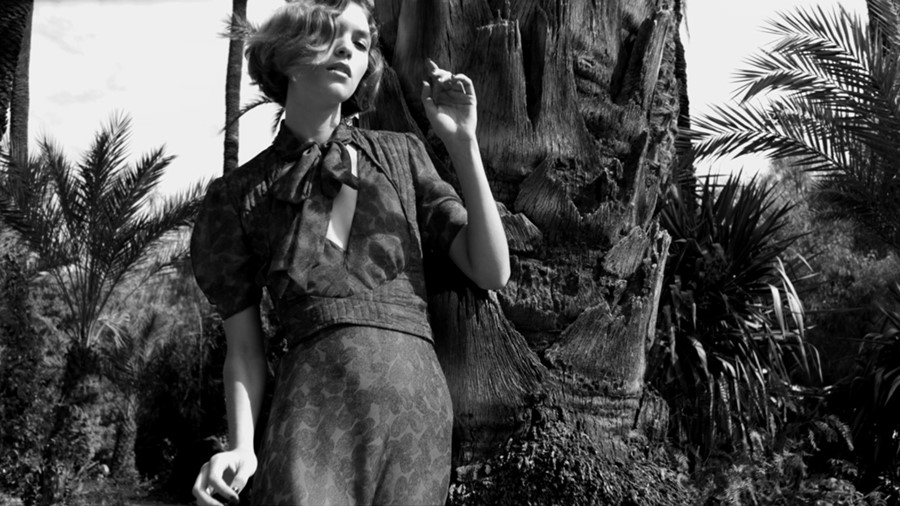For eight consecutive seasons, Stefano Pilati has released a Yves Saint Laurent Manifesto, distributed across cities globally. Working with photographers Inez van Lamsweerde & Vinoodh Matadin, Pilati's Manifesto is intended to 'bring the brand back
"I fell in love with the idea of manifestos and with the term itself, because the word 'manifesto' implied a sense of breaking through something while still being connected to and aware of how things are today. In terms of the format, I didn't really relate to any historical manifestos I've seen because my medium is fashion… There is fashion photography in the manifesto so even the idea of showing the pictures larger than they appear in normal magazines was part of the act of manifesting. First of all you need to question whether it's interesting or not to be political about fashion, or instead you wish to reinforce a message to people that is simply about looking good and projecting a positive energy about yourself. I was no longer interested in thinking of fashion in an elitist way. Everything I picked up from the manifestos in the past suggested that they were trying to create energy around an ideology that was considered, in its time, underground. So I thought for today I would offer another perspective of a luxury brand to a broad demographic that doesn't necessarily relate to fashion in the way that a more privileged layer of people do. I wanted to create a wider influence for the message that was being sent from the catwalk, by taking imagery of a collection and giving it to people on environmentally friendly paper in the street without targeting a specific demographic. One of my visions for Saint Laurent is about giving back, so that even if you can't afford it, you can still pick up the essence of the message, the elements of fashion that might be considered increasingly irrelevant but remain for me its main aspects: the silhouette, the way the clothes are cut, the fabrics, a special pattern. It's to say – "These are my thoughts and this is my message – you can pick up something from this and do it yourself. The Yves Saint Laurent manifestos are against aggressively, against exclusivity, against classification, against isolation, against introversion, against always looking at oneself. This is what it comes to in the end. Fashion can give rise to all of these things and it shouldn't, especially today."
For eight consecutive seasons, Stefano Pilati has released a Yves Saint Laurent Manifesto, distributed across cities globally. Working with photographers Inez van Lamsweerde & Vinoodh Matadin, Pilati's Manifesto is intended to 'bring the brand back to the streets'. An innovative initiative, which continues the succession of revolutionary moves Mr Saint Laurent made: he was the first French couturier to release a ready-to-wear line.
The YSL Manifesto is much more than an en masse distribution of the seasonal campaign shots. Staying true to the idea of a 'manifesto' – a public written declaration of the intentions, opinion, or motives of a leader – it is a powerful, multi-layered message which goes a long way to explain Pilati's thinking and visual iconography for the season. The spring/summer 2011 Manifesto document, printed on recycled paper, takes the reader on a six-month journey. Starting with the show (catwalk and backstage shots and a selection of reviews), it also includes the campaign's location shots, the glorious surrounds of the 1930s Villa Bled Roknine in Marrakech's Palmeraie. The full campaign, featuring model Arizona Muse, is accompanied by stills of the four-minute film, captured during the four-day campaign shoot. The Manifesto closes with a revelatory 'making of' spread showing the tests and edits. This clever acknowledgement of the importance of 'process' taps into one of the most interesting forms of modern fashion communication.
This excerpt is taken from a conversation printed in the Manifesto, between Pilati and Co-Director of the Serpentine Gallery and AnOther's Contributing Editor Hans Ulrich Obrist, about the key ideas behind the manifesto. Obrist is a fitting interviewer, having staged a successful two-day Manifesto Marathon at the Serpentine in 2008.
Text by Laura Bradley



